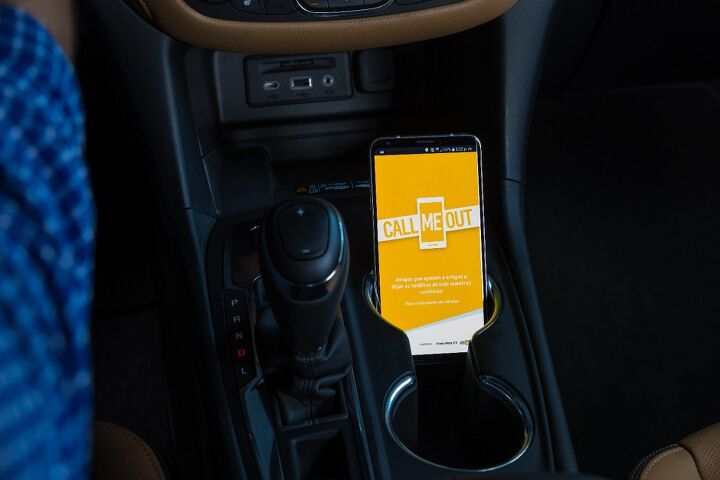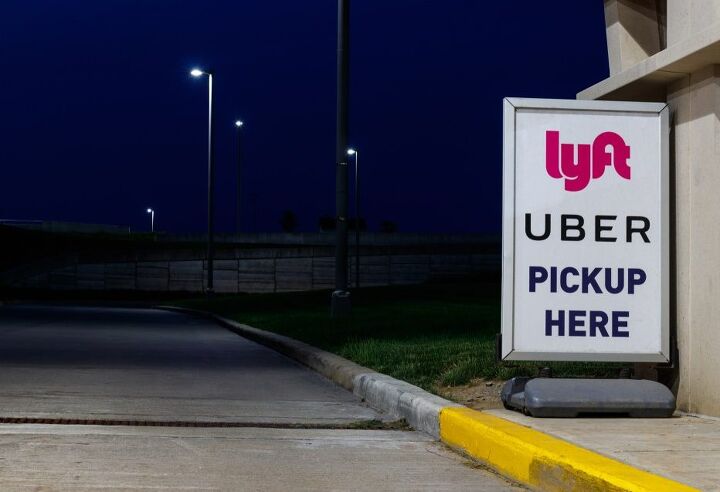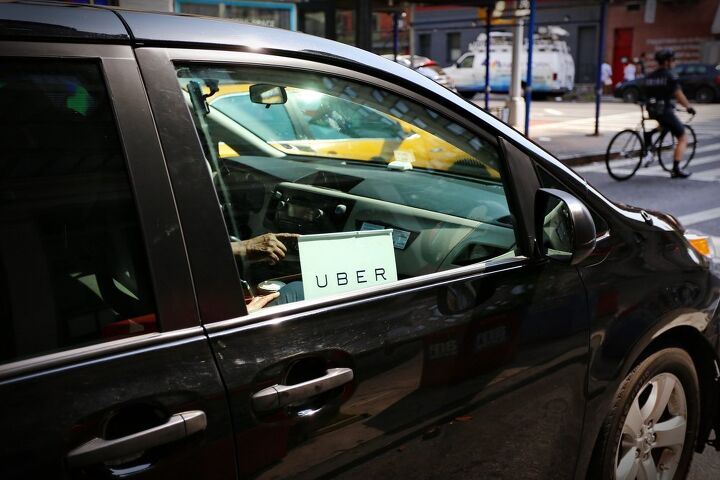#Ride-hailing
Lyft to Issue Partitions to Some Drivers; Company Sued Along With Uber in Massachusetts
You may not have noticed this, but there’s a lot of people wearing masks right now. These individuals aren’t working with drywall or sanding anything, either. You can spot them shopping, walking, or crowded around these new outdoor drinking areas located downtown that force them to huddle together while you attempt to squeeze by — coughing politely to make your intentions known.
After repeatedly Googling “What’s Going On Outside?” it was eventually revealed to your author by a helpful neighbor that there’s some kind of mystery illness nobody knows anything about. They continued explaining, but I had already stopped listening. This new information had me shocked to the core.
All I could think about was how this was going to impact Lyft drivers.
Surely the company has some kind of plan to protect its workforce and make sure they’re not riddled with blood-borne parasites or whatever. Well, we seem to be in luck. On Friday, Lyft said it will distribute around 60,000 vehicle partitions to its busiest drivers as way to protect against the coronavirus while selling customized protective shields to other drivers through the remainder of the summer.
Uber Buys Public Transit Software Firm
On Thursday, Uber Technologies Inc. announced the acquisition of transit software company Routematch — suggesting the ride-hailing giant may soon take up busing as a hobby.
Don’t expect it to supplant your local transit authority overnight, however. Routematch clients tend to be dial-a-ride shuttle services (see: paratransit) seeking to outsource the management of daily operations. The company offers analytics, computer-aided dispatching, route scheduling/planning, real-time vehicle tracking, automated fare collection and applications for customers intended to make finding transport easier. Much like Uber, it operates as the go-between between customers and the services they want.
It doesn’t actually own any of the businesses it effectively oversees, making this a match made in heaven.
Lyft Promises to Swap Exclusively to EVs by Bullying Everyone
On Wednesday, ride-hailing company Lyft announced every vehicle using its platform will be electric by 2030. Since its fleet is comprised primarily of contractors using private vehicles, one might assume the company is planning to offer some financial assistance upon their next purchase. But being sensible rarely means being correct in the postmodern era.
Rather than encouraging its own drivers to make the switch, Lyft plans to work with NGOs, lawmakers, and pressure its industry rivals to make electrification mainstream. Obviously, this will include financial incentives for organizations willing to make the switch to EVs in exchange for a fat wad of cash. That’s what you’re now supposed to focus on. Ignore that Lyft’s announcement literally offers no personal commitment and passes every scrap of responsibility it pretends to be taking on to the government.
Lyft is trying to play the hero, and thinking about it too hard is going to muck everything up.
Keep Your Driver, Uber Tells Select Customers
Amid widespread suspicion of other human beings and the general sense that public transit is a terrible way to travel when COVID-19 lurks everywhere, Uber has rolled out a feature offered overseas to some of its U.S. customers.
Instead of hailing a ride to the grocery store (or what have you), then dialing up another for the ride back, what if you could just keep your driver for the entire trip — like some sort of big shot?
Uber Goes Old School With New Delivery Services
With a pandemic suppressing the world’s need for transportation, Uber has kept itself busy by offering free rides to healthcare workers and expanding its food-delivery service, Uber Eats. Initially, that meant activating the program in more countries. The ride-hailing company has since added ways for businesses to manage meal plans for employees working from home while attempting to supply drivers with masks and disinfectant sprays.
This week, the company said it will expand the ways in which customers interface with these services. But this new method has been popular for well over a century. In a bid to encourage older Americans to use its food-delivery services, Uber has implemented a telephone line designed to help Luddites trapped in their homes. Customers can now dial a toll-free number and discuss menu options with an Uber representative who will help then finalize and pay for their order.
QOTD: Is There an App for That?
At the risk of sounding like any number of insufferable site fully staffed with dough heads who spend way too much time extolling the virtues of kale (is kale still a thing?), our question today is about driving and car-related apps.
While backing up his phone this weekend (I can’t bear to lose those all important notes about used cars that have been long sold, don’tcha know), your author was struck by the amount of space on his phone being consumed by items relating to cars.
Lyft Follows Uber, Promises to Prioritize Rider Safety
At the start of this month, Uber released a safety report in a bid to address concerns surrounding rider welfare. Not to be outdone, its main competitor also took steps to convince the masses that it’s also doing everything within its power to keep customers safe.
Lyft is forming a council of experts to assist the ride-hailing company in revising safety initiatives for riders and drivers. The group will include representatives from the Rape, Abuse & Incest National Network (RAINN), It’s On Us, the National Sheriffs’ Association, the National Association of Women Law Enforcement Executives, and the National Organization of Black Law Enforcement Executives. As with Uber’s report, Lyft is focused on incidents of sexual assault — and blaming society for any problems it may have.
Newly Released Uber Safety Report Focuses On Sexual Misconduct, Murder
Uber released its first safety report on Saturday, primarily to address concerns surrounding rider welfare. The media has become increasingly critical of Uber as a brand after its corporate culture was dubbed toxic — allegedly loaded with sexism and financial progress by any means necessary. Following a fatal accident involving one of the company’s autonomous test vehicles, many grew fearful that the company hadn’t fallen into the habit of promoting (or appreciating) public safety. Hoping to assuage some of those concerns, Uber put together its own safety report.
Earlier in the month, the ride-hailing service said it had received reports of 3,045 sexual assaults in the United States in 2018, with 9 people murdered (nearly half of them drivers… fortunately?) and 58 crash-related deaths. Uber said these issues only affected 0.0002 percent of the 1.3 billion rides the company orchestrated in the United States that year.
The new study attempts to frame data, accumulated over 21 months, against national averages to show that Uber is simply suffering from issues inherent to our society. While noting that an estimated 44 percent of women in the U.S. have been a victim of sexual violence seems like an odd way to absolve oneself from wrongdoing, Uber’s just a fancy cab service trying to distance itself from systemic fears that may have not have been entirely fair.
Uber Loses License in London, Deemed Unsafe by Regulator
Transportation for London (TfL) announced it has informed Uber that it will not be reissued a license to operate in the UK capitol, citing concerns over customer safety. TfL had previously declined to renew the ride-hailing business’ private hire operator license, which expired on September 30th, saying it was unsatisfied with the number of drivers it found “fit and proper to hold a licence.” Then it changed its mind, offering a two-month extension.
Now it’s claiming that at least 14,000 Uber trips taken within the city included drivers linked, via their app profiles, to cars they were not legally registered to drive. Having done an impromptu survey of his own (done as unscientifically as possible by just asking drivers if they owned the vehicle), your author found the number of “rogue” Uber drivers in New York City to be about one in five.
While easily framed as a gotcha moment, that ratio isn’t really any different from what I’ve experienced with NYC’s sanctioned yellow (or green) cabs. But that doesn’t exactly make it a non-issue either — just more of the same.
Chicago Considers Congestion Charges, Starting With Uber/Lyft
Chicago is considering sticking ride-hailing services like Uber and Lyft with a new tax that would add a few bucks onto each ride. Mayor Lori Lightfoot has proposed a $40-million-per-year tax increase as part of a broader traffic plan modeled after London’s famous congestion fines. That means not all rides would be subject to the same fees, but each trip taken within the city would still cost a little extra.
While congestion charges are all the rage in Europe, they’re uncommon in the United States. New York City recently decided to financially penalize every driver taking a trip below 60th Street (something I’m not thrilled about), positioning Chicago as the second major metropolitan area in the U.S. to move forward on congestion fees. Lightfoot claims it’s a necessary first step “to improve mobility and further our goals of ensuring sustainable, affordable and reliable access to transportation options in every neighborhood.”
Center for Auto Safety Asks Uber/Lyft to Stop Using Recalled Cars
Last week, the Center for Auto Safety announced it had reached out to America’s ride-hailing giants to encourage them to stop allowing drivers to use vehicles under active recalls. The group’s release references a Consumer Reports study from this spring that alleged 1 in 6 automobiles commissioned by Uber and Lyft had unresolved defects in the NYC and Seattle areas.
“Unrepaired recalled vehicles are dangerous and can kill or injure drivers, passengers, bikers, or pedestrians. Exploding Takata airbag inflators which have resulted in at least 24 deaths worldwide, GM ignition switch failures which have resulted in at least 170 deaths in the U.S., and hundreds of other less-publicized defects pose equally significant threats to public safety,” explained the advocacy group. “Yet, recent studies from Consumer Reports and others have found concerning numbers of rideshare vehicles with unrepaired recalls on the Uber and Lyft apps.”
QOTD: Ready to Share Your Ride?
We often place ourselves in enviable situations in these QOTD posts, selecting which model best suits us following a sudden windfall, or perhaps deciding which vehicle tops all others in performing a certain task. In a sense, this is just like those other questions.
Except… you’ll be taking a severe pay cut.
Things have gone bad, you see. Somehow, following some unfortunate sequence of life-altering events, all the strings that tied you to a life of leisure and fair pay have snapped. You’re now just surviving. Yes, you’re stuck driving for Uber.
Consumer Reports: What Are Uber, Lyft Are Doing About Recalls?
As ride-hailing services utilize the personal vehicles of contractors, rather than a commercial fleet of their own, repairs and recalls have to be handled by individual drivers. While it shouldn’t be a revelation that some recalls fall through the cracks, Consumer Reports is concerned that the ratio of unaddressed safety issues are unbecoming of companies pushing multibillion-dollar IPOs.
“Uber and Lyft are letting down their customers and jeopardizing their trust,” suggested William Wallace, products policy manager for Consumer Reports. “Uber’s website says people can ‘ride with confidence,’ while Lyft promises ‘peace of mind,’ yet both companies fail to ensure that rideshare cars are free from safety defects that could put passengers at risk.”
Uber Lowballs IPO, Eager to Avoid Lyft's Fate
Ride-hailing company Uber approached its Thursday initial public offering with an abundance of caution, setting a lower-than-expected share price in a bid to avoid rival Lyft’s stock plunge.
When markets open Friday, Uber’s stock will be priced at $45, near the bottom of a previously stated range that topped out at $50. That puts Uber’s initial valuation at just over $82 billion. Amid controversy surrounding its business practices and growing uncertainty about the viability of huge ride-hailing firms, Uber hopes to raise $8.1 billion from its IPO.
Uber Drivers Protest Ahead of Friday's IPO
Uber and Lyft drivers from the world over are going on strike today to protest the company’s working conditions and pay. However, the careful timing of the event also appears to be aimed at torpedoing the brand’s fast-approaching IPO.
While Uber exists as a corporate middle man between riders hunting for a vehicle and drivers seeking a fare, the company’s official position is that both are customers. As Uber sees it, it’s providing both with access to its platform and thereby offering a service. But many drivers disagree and claim the only way to make a living is to work ludicrously long hours, which they believe should at least entitle them to be called employees and warrant some benefits.




























Recent Comments